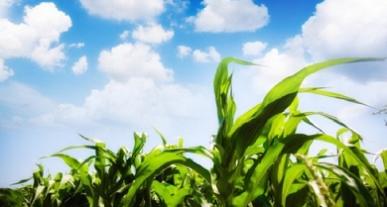Smithfield Foods, world’s largest pork producer, works with EDF to cut emissions

First, the facts: We will have 9 billion people on the planet by 2050. That’s 2 billion more than we have today – stretching Earth’s land and water resources to meet nutritional needs in a dramatically changing climate.
In the United States, the Environmental Protection Agency calculates that agriculture is the fifth-largest source of greenhouse gas emissions, contributing 8 percent of total GHGs. Fertilizer use and soil management are responsible for half of those emissions.
Next, the challenge: Many farmers encounter difficulties in determining the precise amount of nitrogen fertilizer their crops need. It gets tricky. Using too little fertilizer can limit crop production. Too much fertilizer pollutes water and emits a potent greenhouse gas called nitrous oxide, which is 300 times more powerful than carbon dioxide.
The stark reality is that crop production must increase approximately 70 percent by 2050 to feed our growing human population. We cannot choose between agricultural productivity and sustainability — we must have both.
To address the challenge, Smithfield Foods, the world’s largest pork producer, and its hog production subsidiary, Murphy-Brown, are working with grain farmers to reduce excess fertilizer on crops grown for hog feed. The project will help farmers save money on fertilizer, while maintaining high crop yields, improving water quality and reducing climate impacts. The initiative is the first of its kind among animal agriculture companies.
EDF helped Smithfield design its program, which recently received a “best in class” award from Walmart at its Sustainability Expo. Smithfield is a major supplier of pork products to Walmart, which is asking suppliers who use commodity grains like corn, wheat and soy in their products to develop plans that reduce fertilizer loss on farms.
EDF and Smithfield do not agree on everything, but we do agree that farmers growing animal feed have an important role to play in reducing the climate impacts of agriculture.
Our initiative with Smithfield is an important part of a comprehensive effort to ensure agriculture production meets human needs for food and contributes to the resilience of our environment. So far, EDF’s Sustainable Sourcing Initiative has helped optimize fertilizer use and reduce loss by an average of 20 percent on nearly half a million acres, while maintaining or increasing crop yields.
Animal agriculture consumes about 40 percent of the corn grown in the United States, which makes companies like Smithfield key to reducing the greenhouse gas and water pollution footprint in grain supply chains. Smithfield plans to enroll 75 percent of its grain sourcing acreage in the Southeast and Midwest into optimal fertilizer practices by 2018.
The company will start with grain farmers in North Carolina, Virginia, and South Carolina and extend to Midwest farmers in 2015. We estimate that the collaboration will improve fertilizer use on 450,000 acres nationally and reduce GHG emissions from agriculture by 60,000 tons, which is the equivalent of taking 13,000 cars off the road.
The challenge before us is to feed a growing global population while sustaining the natural resources on which we all depend, including agriculture itself. Solutions must also be economically viable for the farmers who grow the crops to feed us.
EDF’s collaboration with Smithfield is an important step in that direction. We hope other companies in the agriculture supply chain will follow.












